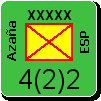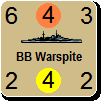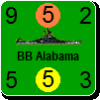warspite1
Posts: 41353
Joined: 2/2/2008
From: England
Status: offline

|
Corwin90 here is my take on the game and your specific question:
Your question was “what does this game do to justify such a high price?”
Well the answer to that is quite simple: World In Flames is the best wargame I have ever played. If Matrix World In Flames was fully functioning with an AI, Netplay and all optionals and scenarios then to me, this game would not be worth $100, it would be worth a whole lot more than that – I would gladly pay triple the price – and indeed have done so and more over the years when it comes to the board game. Keeping up with the expansions and new versions has not been cheap!
Back to MWIF.
The questions potential purchasers have to ask is whether, at $100 (or whatever the actual cost is):
a) do I get enough for my money as the game is now - with no AI, no net play, many bugs still to be squashed, and with some optionals and some scenarios to be coded? Essentially you are limited to playing solitaire or maybe hot seat. Some people also seem to have got some kind of multiplayer working but I do not know to what extent.
b) if not, am I happy to pay my money and see this as a long term project that I trust (there are no guarantees) will one day be finished and that, if completed, will make the outlay worthwhile?
For reasons given below the answers for me are a) yes and b) hell yes. I suspect there will come a point where I can no longer be bothered to play against myself, but there is no sign of that at the moment, and in playing solo I am picking up the rules and handy tips on play (I last played the board game almost 20 years ago and it was a different version). Hopefully I will thus be ready when net play comes on board.
This is most definitely NOT a beer and pretzels game – and it’s not your run-of-the-mill computer war game either. If you think/hope that this is a game that you are likely to be able to plug in and play without a reasonable amount of reading of the rules and/or following the tutorials, then this is not for you. Matrix World in Flames is a faithful reproduction of Australian Design Group’s award winning board game. A lot of the rules and concepts are different even to many board war games – the naval rules in particular.
So what makes the game so special?
One of the (many) great things about this game is the fact that you are the leader of one or more of the major powers of WWII. As such you get to command all those great units from WWII (and many what-if units too). CAUTION: Anyone casting a casual glance at the screenshots and seeing all the superb full colour camouflage, named aircraft and the individual ship counters may be forgiven for thinking that the orders of battle and the counter factors are 100% historically accurate. THIS IS NOT THE CASE. This is not War in the Pacific – Admirals Edition or War in the East. So, if this level of detail is important to a player, and to avoid comments like “This game is borked!” and complaints such as “x should have a better attack factor than y” and “Z was not launched until xxxx” I just want to make clear that this is a strategic level game and there are some liberties taken for play balance purposes and that ensure this game is FUN and winnable by both sides.
However, the liberties taken to ensure the game is balanced does not stop the game from having a real historical WWII feel about it. Each player will take command of the forces that his/her country/side had, the problems that they were faced with, and that need to be managed. E.g. Germany has a large army, its best units are extremely powerful, but there are a lot of lesser units and movement allowances are less for these than the bulk of their more mechanised British and American counterparts. The Commonwealth has a large navy (although much of this is WWI vintage) and the Royal Navy has tons to do to keep the sea lanes open for their convoys. Personally I have only ever played a two-player game – Axis vs Allies. This works perfectly though as, regardless of which side you are you get to control a huge army (Germany or Soviet Union; a large navy (USA/CW or Japan) and decent air forces (USA/CW or Germany).
Another win for this game (if this is important to you) are the aesthetic qualities. The Quality and colour of the counters, maps etc are a really big issue for me personally. A game that looks messy and/or gives you a headache just to read the info is a no no. MWIF ticks the aesthetic box and then some.
Although this is a strategic level game, the “chrome” employed is quite remarkable.
- You get to command every ship* on a named, individual basis from WWII + some ahistorical what-ifs... heaven (if that’s your thing). The aircraft carriers get to carry their own aircraft counters – and you decide what type(s) to load them up with.
- The aircraft, in full colour camouflage, are named types, not faceless "fighter" or "bomber". You get to fly those great aircraft from WWII – Spitfires, Me-109’s, Swordfish, Avengers, Hellcats, Lancasters….and some not so great……
- The land units are the least detailed in this respect, although the designations are largely historically accurate, and there are many types available, and with their own characteristics – Infantry, Armour, Paratroopers, Marines, Engineers, Territorials, Militia etc etc.
* Generally, from light cruiser upwards.
Although there is lots to learn and this is a monster game, one huge positive is that there is little in terms of the more tedious aspects of micro-management to worry about*. The vast majority of tasks you are employed to undertake are interesting elements, whether it be deciding your strategic goals, what to build, placing reinforcements, choosing what to attack, where, with what, or weighing up the political consequences of your choices.
*For the avoidance of doubt this is not a criticism of those who like that.
There are some key concepts that mean replayability is almost limitless:
- A player is not guaranteed his starting forces (units are drawn randomly from the force pools).
- Start positions are at the player’s discretion (no fixed positions that players can exploit by perfecting guaranteed attacks against).
- The game employs a basic rules framework that means that while each game has a World War II “feel”, apart from a limited number of restrictions e.g. Germany must invade Poland first impulse, the Commonwealth and France must declare war on Germany in the next impulse etc, each player is free to employ a wide range of tactics. Fancy taking out Spain? Turkey? Sweden? Then you can…. or at least can try. America will come into the war - that is almost certain…but when? Each player’s actions – both Allied and Axis - will affect the date of entry and benefits have to be weighed up against the costs when taking those actions.
- The decision of what to build is yours – subject to having enough build points and having the right gearing ratios (e.g. to replicate the problems of industrial production, you cannot simply switch all your production to one type in a single turn - it takes time to tool up and switch production). You cannot always guarantee what you get either. For example, you may choose to build an Infantry corps. But what value that Infantry Corps is, is down to the luck of the draw. The 10-6 Armour unit will be drawn eventually – but when?
- Each turn length is variable – turns are split into impulses and there are variable numbers of impulses each turn. Again, a player can affect the turn length by options that they take. The weather is also variable – not just by turn, but by impulse.
So, as you can hopefully see, this game is challenging, fun and beautifully designed and crafted. Is it worth $100? Only you can decide.
< Message edited by warspite1 -- 8/2/2014 7:27:36 AM >
_____________________________
England expects that every man will do his duty. Horatio Nelson October 1805  |
 Printable Version
Printable Version













 But I feel the AI is many years off yet, hopefully not.
But I feel the AI is many years off yet, hopefully not. 


 New Messages
New Messages No New Messages
No New Messages Hot Topic w/ New Messages
Hot Topic w/ New Messages Hot Topic w/o New Messages
Hot Topic w/o New Messages Locked w/ New Messages
Locked w/ New Messages Locked w/o New Messages
Locked w/o New Messages Post New Thread
Post New Thread